History and tradition
Top / About Gesshoji / History and tradition
A Legacy of History and Legend:
The Mausoleum of the Lords of Matsue
Gesshoji has long been preserved as the mausoleum of the successive lords of the Matsue Domain.
Throughout its grounds, cultural properties from the Edo period remain, quietly conveying the history and traditions of the past.
Each historic site tells its own story—rich with legends and memories—that brings the heritage of Matsue to life for all who visit.
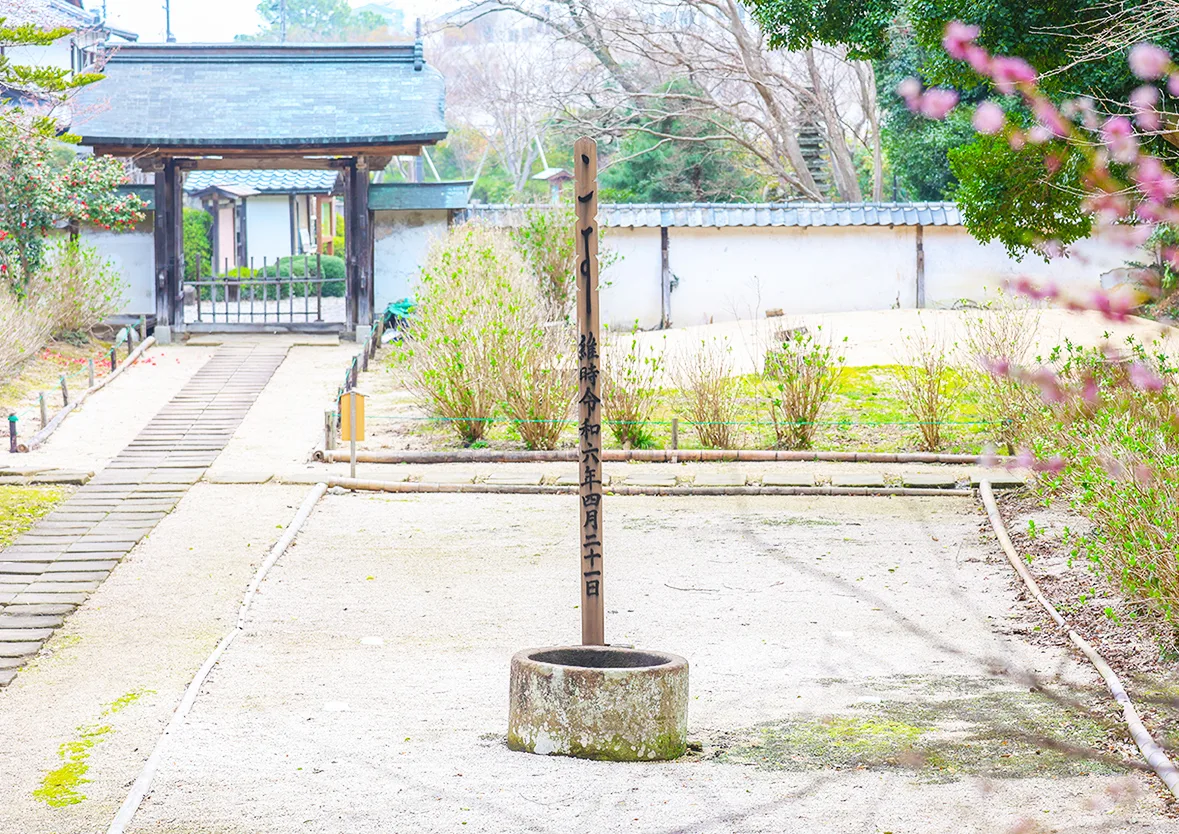
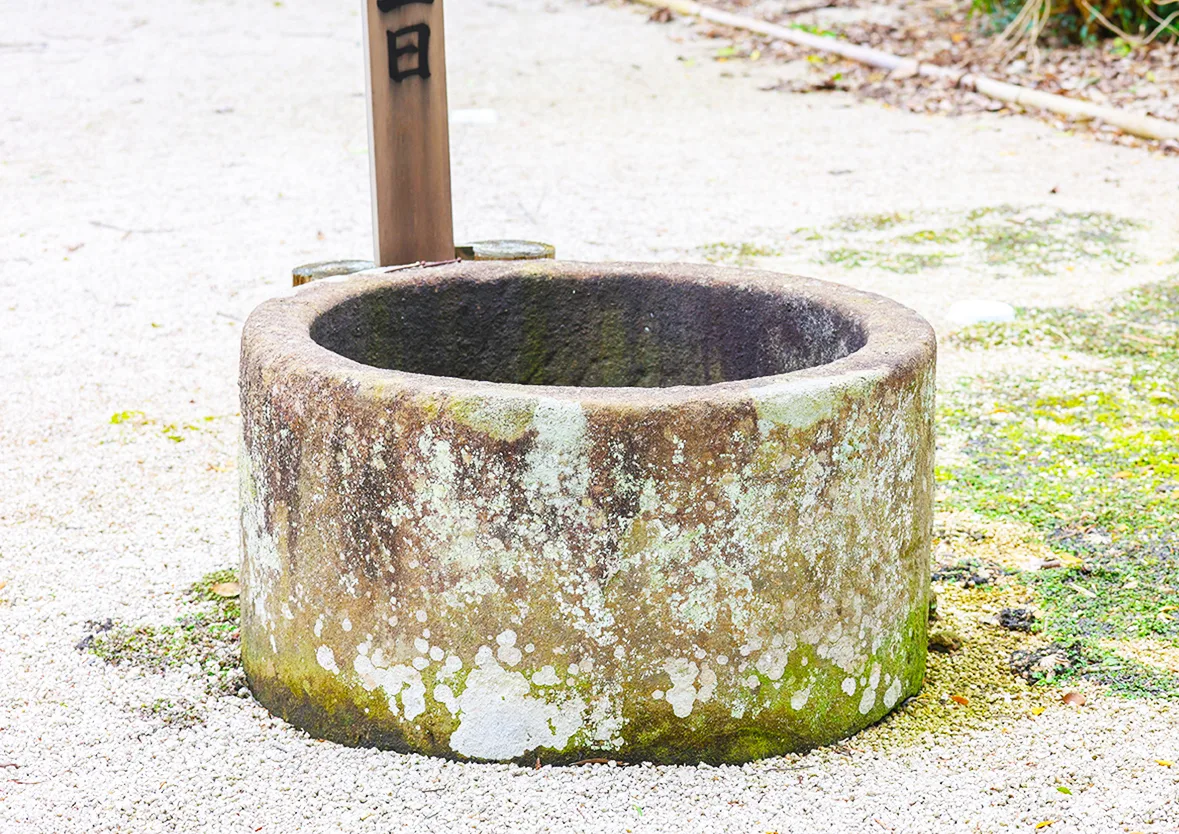
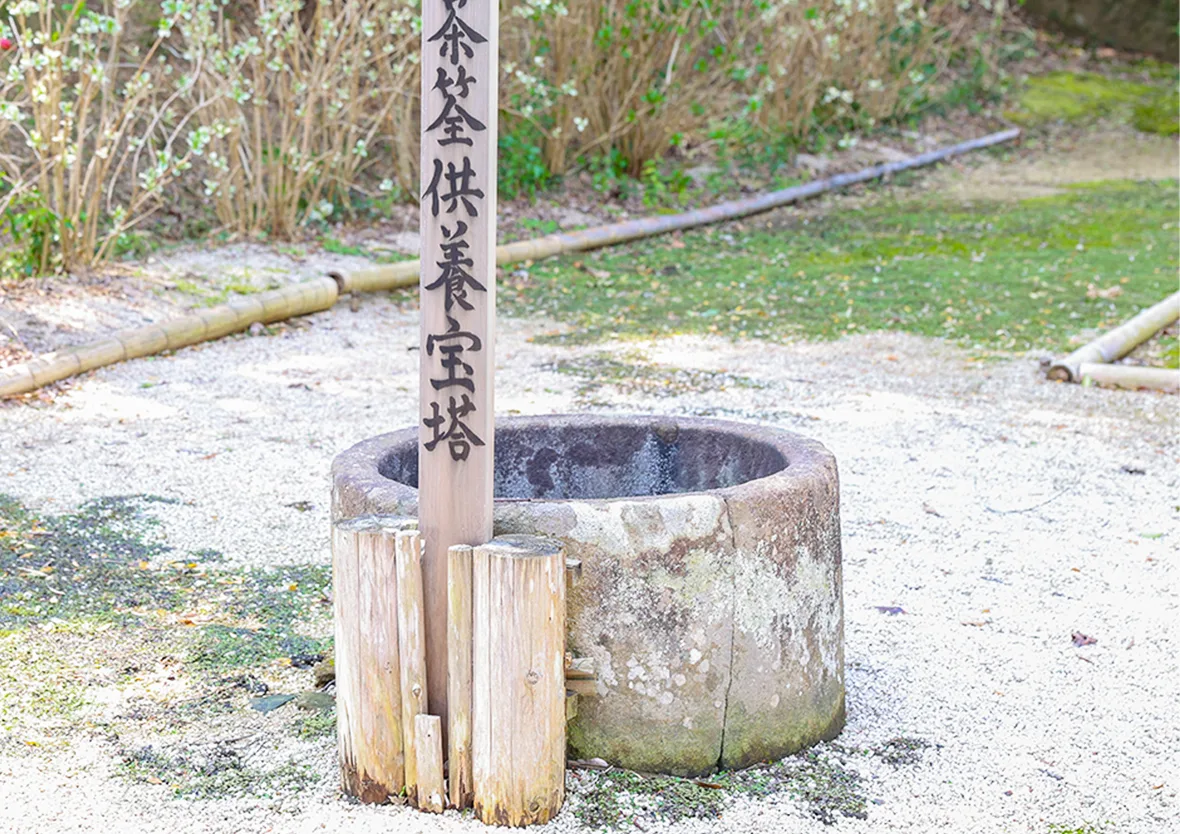
Chasen-zuka (Tea Whisk Memorial Mound)
Gesshoji has long been closely connected with the world of tea. Within its grounds stands the Chasen-zuka, a mound dedicated to retired tea whisks (chasen) that have served their purpose in countless tea ceremonies.
This monument symbolizes gratitude toward these essential tools and expresses a deep wish to preserve the spirit of tea culture. It continues to be revered by tea practitioners who visit to pay their respects.
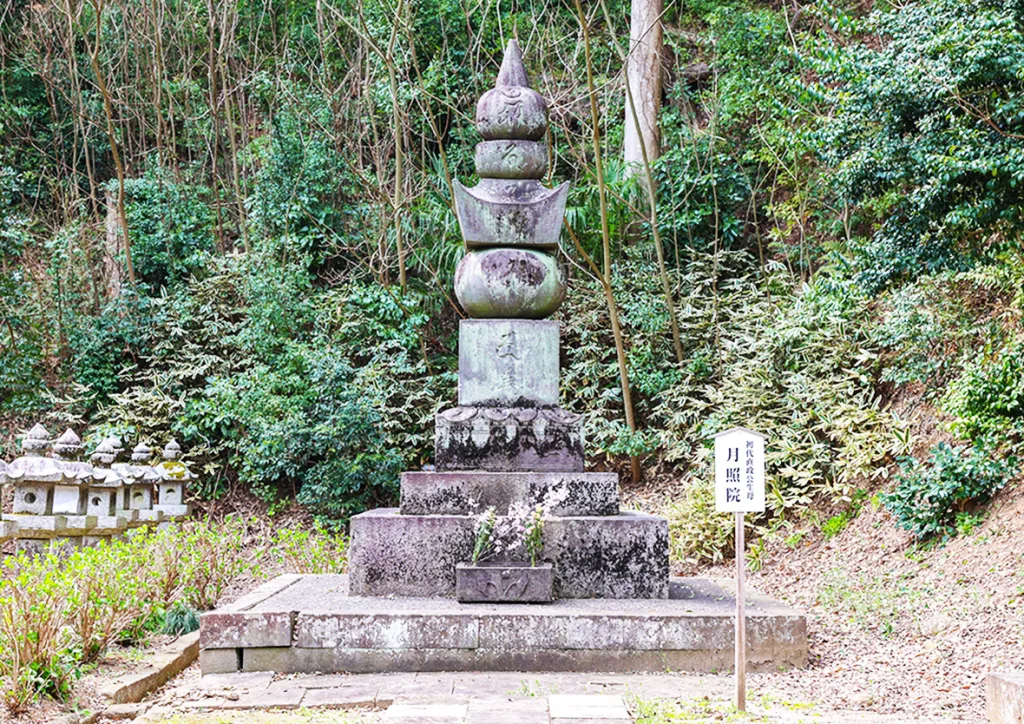
Grave of Lady Gesshoin, Mother of Lord Naomasa
Following the relocation of the Matsudaira family graves from Tokyo’s Tentokuji Temple after the Great Kanto Earthquake, the grave of Lady Gessho-in, mother of Lord Naomasa, was also moved to Gesshoji.
The tombstone, originally crafted in Edo, now rests here as a historically significant site honoring the mother of the founder of the Matsue Domain.

Site of the Former Main Hall
The original main hall, constructed during the Edo period, was dismantled in the wake of the Meiji Restoration and never rebuilt to its original scale.
Although there were reconstruction plans in the Taisho era, they were never realized.
Today, the quiet foundation stones still remain, marking the spot where the hall once stood.


Monument to Raiden Tameemon
Raiden Tameemon, born in 1767 in Shinano Province (now Nagano Prefecture), was a legendary sumo wrestler of the Edo period. Under the patronage of Lord Fumai, he became an official sumo wrestler of the Matsue Domain at the age of 20.
He achieved an astonishing record of 254 wins and only 10 losses, earning him a reputation as the strongest rikishi in history.
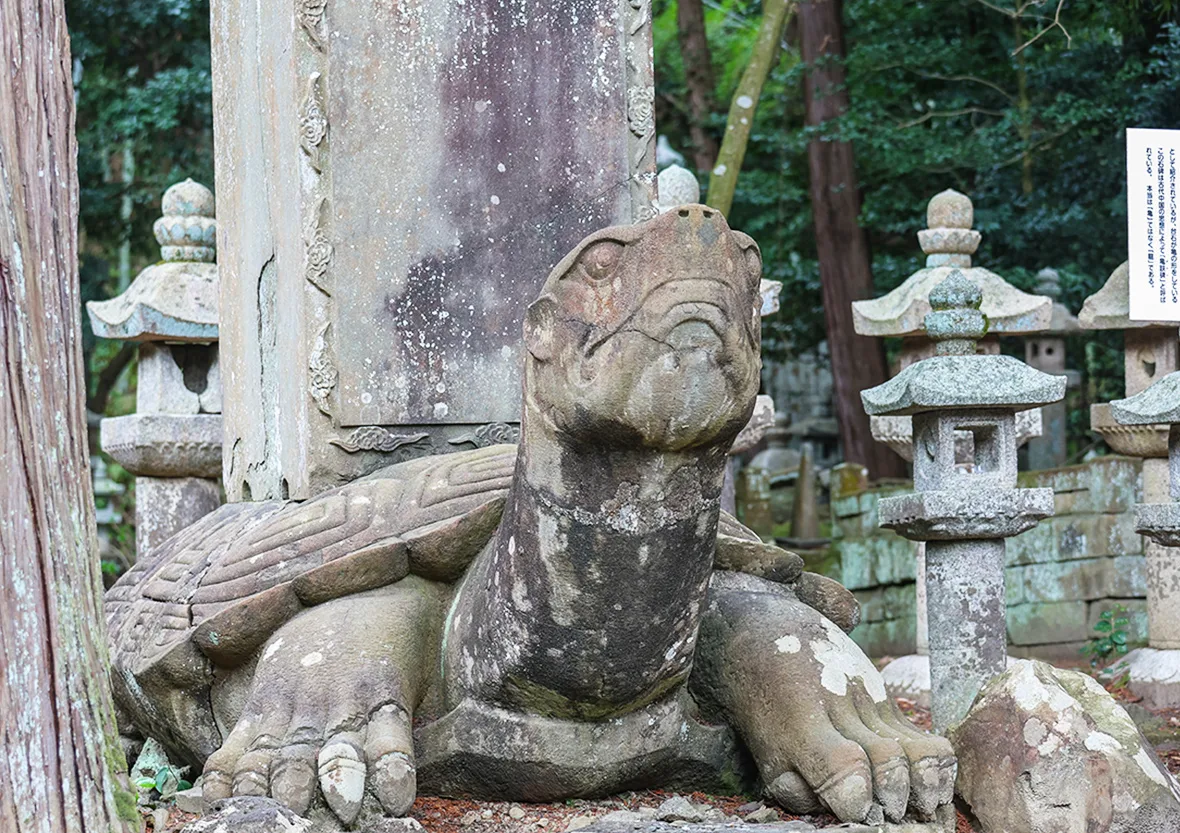
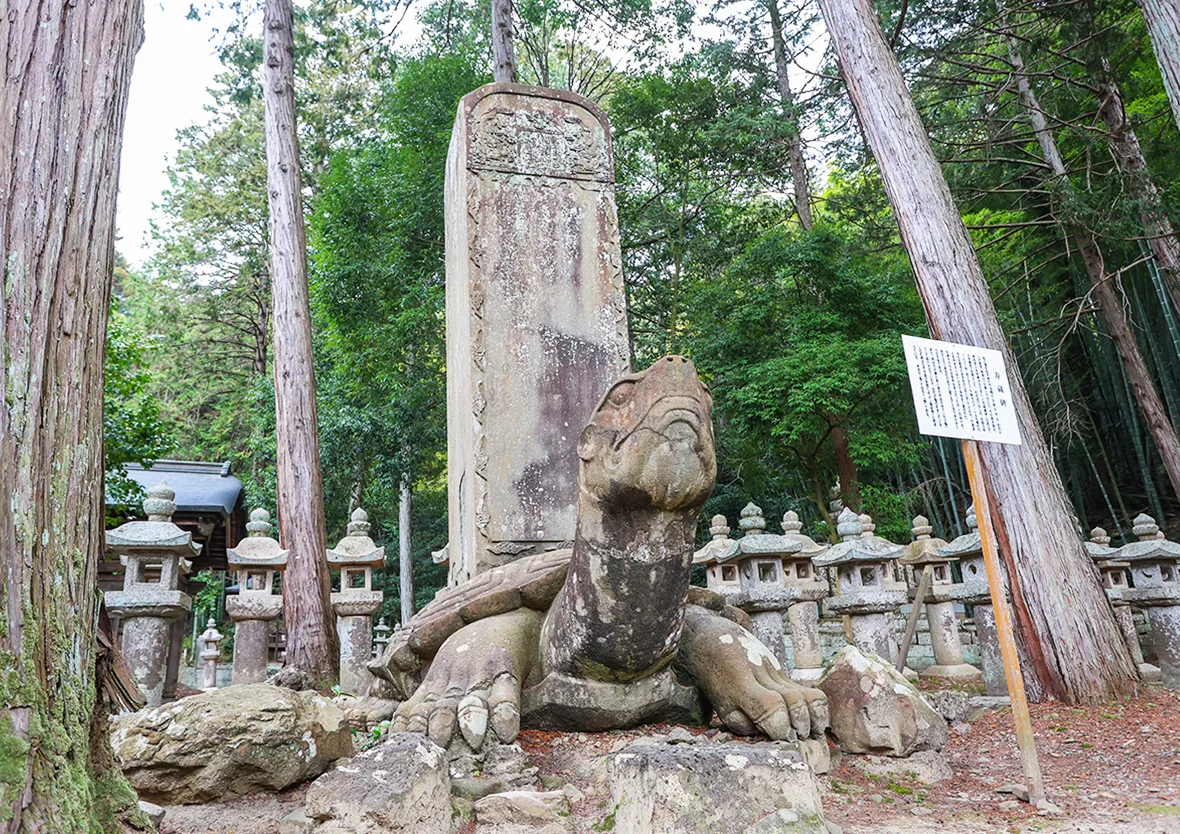

Juzō Monument of the Great Turtle
The Great Turtle of Gesshoji, featured in Lafcadio Hearn’s essays, rests within the gate of the sixth lord’s mausoleum.
Its dignified presence continues to draw the attention of visitors.
Legend has it that touching the turtle’s head brings longevity, and many people come to offer prayers for long life.
